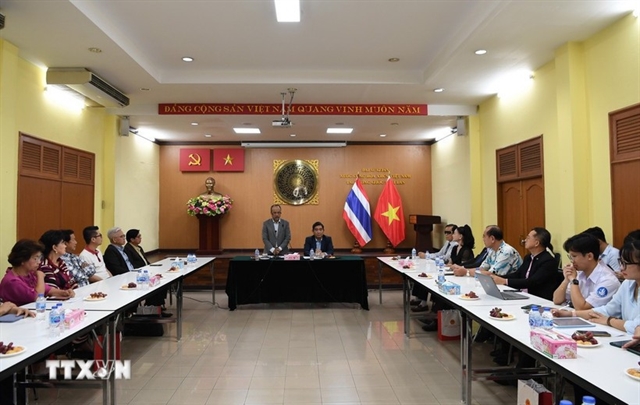 Society
Society

HCM City should develop a “twin city” model, which would divide the metropolis into two urban areas, a western and an eastern one, to allow each part to properly develop, said Dr Võ Kim Cương, former deputy chief architect of HCM City.
 |
| A stretch of Trần Khắc Chân Street across the Nhiêu Lộc-Thị Nghè Canal in HCM City. A former deputy chief city architect advises authorities to develop the metropolis into separate western and eastern areas. — VNA/VNS Photo Thanh Vũ |
HCM CITY – HCM City should develop a “twin city” model, which would divide the metropolis into two urban areas, a western and an eastern one, to allow each part to properly develop, said Dr Võ Kim Cương, former deputy chief architect of HCM City.
The western city would include 16 inner districts and five outlying ones, Cương said at a conference on solutions for increasing land values and focusing on the development of infrastructure and land use in HCM City. “The infrastructure of the 16 inner districts is overloaded,” he added. It is best to limit construction and even freeze it in several areas in the 16 inner districts, he added.
This means that infrastructure, houses and other construction there should be upgraded and maintained, but new houses and buildings should not be allowed.
In the five outlying districts, comprehensive planning for developing three new modern urban areas, including Hiệp Phước in Nhà Bè District, Tân Trúc in Bình Chánh District and Củ Chi District, should be carried out because they are neccesary industrial and service urban areas.
Transit-oriented development is the suitable orientation for developing these new modern urban areas, Cương said.
The eastern city, including districts 2, 9 and Thủ Đức, has a good location and favourable conditions for modern development, he said. “The first thing is to make plans and invest in a modern transport system,” he added.
Development management in the eastern city should be strict to ensure synchronism in the transport system and infrastructure, he said. In the eastern city, the main transport vehicle should be metrol rail transit, buses, and cars, he suggested, adding that luxury appartment buildings and villas should be developed.
However, the existing residential areas in the eastern city should also be developed with modernization, he said. To develop the eastern city, land-based financing has to be exploited, he suggested.
Dr Huỳnh Thế Du of Fullbright University Việt Nam added that land-based financing techniques are very common options for cities to finance urban infrastructure. “This method will help solve the limited local budget financing for the very high demand of infrastructure constrution,” Du said.
It is a very suitable option for provinces and cities in the country, he suggested.
Dr Nguyễn Ngọc Hiếu of Vietnamese-German University’s sustainable urban development, said that a property tax is an efficient tool to help reduce the cost of public investment in upgrading urban and transport infrastructure.
Võ Thị Ngọc Trinh of HCM City Open University’s Economics and Public Management Faculty said financing solutions for infrastructure development in HCM City must be found given that current capital for development is scarce. Public-private partnerships (PPP) should be strengthened to attract more capital from the private sector for infrastructure projects, Trinh said.
A Law on Investment in PPP projects should be written to create a solid foundation for attracting private investors more effectively, she added.
The October 20 conference was held by the city Department of Planning and Architecture in co-operation with the Department of Finance and HCM City Open University. –VNS




